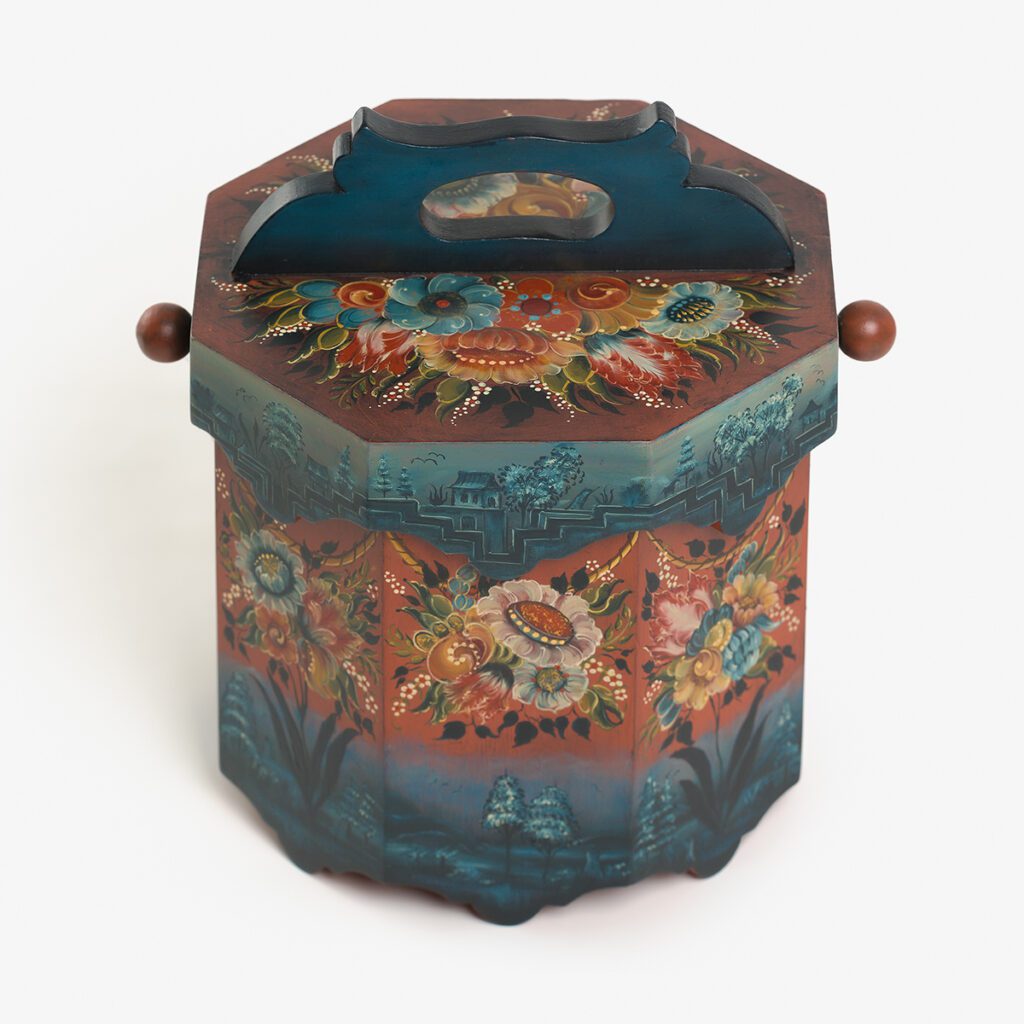- Life Dates 1964, East Chicago, Indiana
- Occupation Artist
- Residence at Time of Award Nelsonville, Wisconsin
Lisa Anderson
Gold Medal In: Rosemaling, 2024
Ribbons
- 2022 Blue ribbon for a Vest Agder-style plate
- 2024 Blue ribbon for a Valdres-style Ambar
- 2024 Red ribbon for a Dragon Gudbrandsdal-style Plate
Artist Statement
I was first exposed to the beautiful art of rosemaling eleven years ago when I took a class with my 12-year-old daughter for fun and bonding. I had never painted artistically before that. My early pieces could provide a perfect example of how practice, hard work, and passion can move a person with no artistic background to become a skilled artist. I have taken classes from many accomplished rosemalers and gold medalists. Steadily, I improved my skills as I worked my way through competitive levels of painting and exhibits as beginner, intermediate, advanced, professional, Nordic rose, and very recently, Vesterheim Gold Medalist!
I still have much to learn and must continually improve my knowledge and techniques. I want to preserve the old traditions because I think people of all cultural backgrounds today would fall in love with rosemaling if they could see the diversity and creativity inspired by the early rural artists.
Telemark and Gudbrandsdal are the most beautiful, dramatic, and perhaps difficult styles to paint in my opinion. I credit two of my teachers for my development as an artist. Juel Krueger, now 91 years old, instilled in me a certain fearlessness and ability to design original Telemark art. Then I was most fortunate to be accepted into a one-year apprenticeship with Master Rosemaler Andrea Herkert, VGM, in which we spent immersive days at the Vesterheim Museum and her studio. We studied portfolios of several rosemaling styles. First, I would watch as Andrea painted in a specific style. Next, I would go home and try my hand at my interpretation of what I learned, and then, most importantly, I received critical feedback on my work. This process of engaging with the styles on a deeper level became my blueprint for growth.

